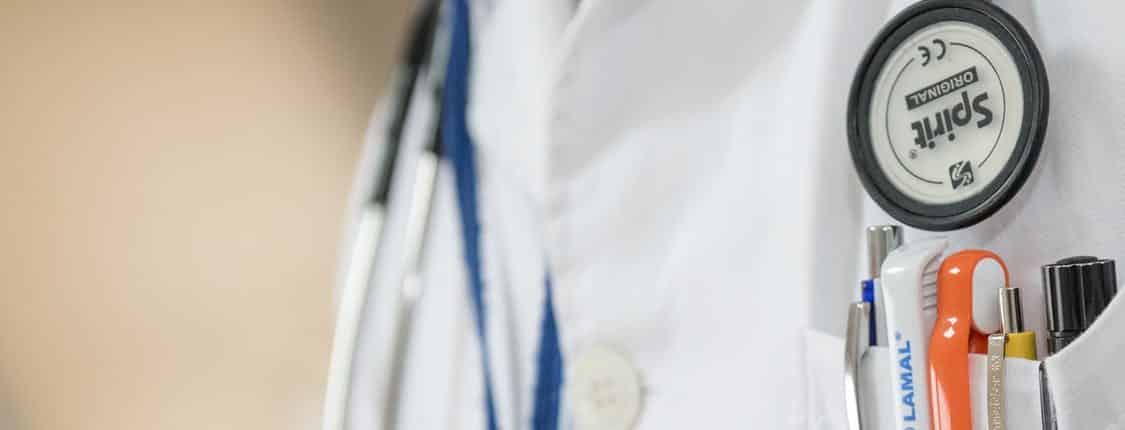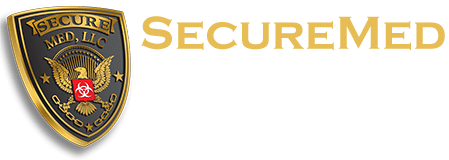How to Safely Integrate Biohazard Disposal Containers into the Workplace

Hospital employees are at constant risk for sharps-related injuries that expose them to bloodborne pathogens that can cause serious diseases. The Occupational Safety and Health Administration (OSHA) estimates that 5.6 million healthcare industry workers are exposed to this risk by handling sharp devices such as scalpels, sutures, and hypodermic needles, or other blood collection devices.
Since accidental needlesticks occur most frequently in operating rooms and patient rooms, it is essential that biohazard disposal containers are regularly provided and consistently utilized in the workplace. To help ensure the most effective incorporation of these containers, here are six best practices to keep in mind:
6 Best Practices for Biohazard Disposal Containers
- Keep out of reach of children
Sharps containers should never be within reach of children. Children are naturally curious, and when visiting family members in the hospital, they tend to touch anything and everything within reach. To prevent them from coming into catastrophic contact, sharps containers should be properly mounted on the wall at approximately eye-level for adults.
Similarly, since the germs and diseases potentially contained in bodily fluid can be easily transferred through accidental contact, any items contaminated with bodily fluids should not be accessible to curious little fingers.
- Place where most useful
The mantra, “out of sight, out of mind,” can come into play when biohazard disposal containers are not easily available in hazardous areas. Consider the function of each space in your workplace and provide appropriate containers, accordingly. For example, in areas where blood is regularly drawn, sharps containers should be mounted on multiple walls. This easy access prevents personnel having to carry the needles any distances in order to locate an appropriate disposal site. The faster the biohazardous waste is securely disposed of, the tighter control you maintain.

- Hang securely
When mounting biohazard disposal containers to walls, be sure to use the correct fasteners and test the maximum amount of weight that the container can securely hold without falling. Depending on your facility’s biohazardous waste disposal schedule, containers could fill up and get too heavy to safely hang. If containers crack or appear damaged, your medical waste disposal company should provide you with replacements. If the damage is caused by overfilled containers, you may want to consider increasing the size. However, you’ll also need to increase the strength of the mounts.
- Provide trash receptacles
Not all waste produced in your workplace should qualify as biohazardous. This means that you will need to have regular trashcans available, as well. However, it is essential that needles and other contaminated items aren’t placed in these non-protected receptacles!
- Avoid the overflow
Biohazard disposal containers should never be allowed to overflow beyond its intended capacity. Sharps and contaminated materials should remain entirely contained and under control. As you become familiar with the volume of waste that needs to be collected in the various areas of your workplace, communicate your needs with your medical waste disposal company so that they can provide you with the necessary level of service.
- Ensure appropriate containers
Your medical waste disposal company should be able to provide you with a wide range of containers to choose from. From wall-mounted boxes, to rolling bagged containers, to plastic boxes and bins, medical waste containers are not one-size-fits-all. Sharps, gauze bandages, gowns, blood tubing, linens, and more should all be assigned to secure containers to be cleaned or disposed of. Your role in protecting the population from contamination is serious business. You must make appropriate containers available for each and every waste item, and those items should be sorted according to type to be properly disposed of.

Partner with Medical Waste Disposal Professionals
Although every medical facility should have a supervisor who keeps a close eye on biohazard disposal compliance, it’s important that ongoing training is provided to employees and staff. Simply having proper containers isn’t enough, if they aren’t being used consistently and correctly by everyone.
When biohazard disposal containers are properly maintained, regularly emptied, and safely disposed of, it reduces the risk of serious illness and worse!
To reduce your liability and to ensure the correct management and disposal of your medical waste, contact SecureMed to learn more and to request a FREE quote!







